FLESH IN THE PAN
Ditch the meat-eating guilt and consume less but better
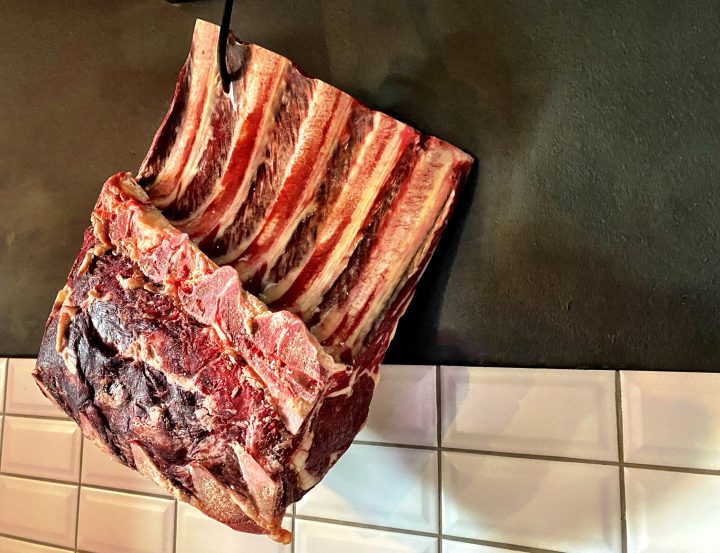
You’ll spend a bit more when you buy from an independent butchery but you’ll do so with the knowledge they have been ethically farmed and sourced – plus the cooking tips are free.
Once upon a time, John Cleese asked: “If God did not intend for us to eat animals, why did he make them out of meat?” Which of course, implies a belief in the heavenly father if you were to use this to make a point. Denis Leary kept it broad with “Not eating meat is a decision. Eating meat is an instinct” – one of his tamer quotes on the matter, even when taking satire into consideration, and Leary has never shied away from being confrontational and controversial – while the ever-opinionated Fran Lebowitz said, “Vegetables are interesting but lack a sense of purpose when unaccompanied by a good cut of meat.”
In a country as diverse as South Africa, who eats what meat, or doesn’t, has a particular importance. Which makes Frankie Fenner’s recent experience as interesting as it is apposite.
Frankie Fenner Meat Merchants has its main store in Woodstock, with other outlets in Gardens Centre and Palmyra Junction in Claremont, as well as the Oranjezicht City Farm Market. The online shop is pure meat porn. In February 2021, Conscious Meat Merchants opened at Makers Landing at V&A Waterfront, a coming together of two brands: FFMM and Conscious Carnivores. Andy Fenner tells the story.
“I have always wanted to open a Halaal butchery. I had the idea about three years ago. Thankfully, I never did this. I say that because it would have been an absolute failure. It would have flopped. You cannot be a white dude and open a Halaal butchery because it is inauthentic. I can say that now, with hindsight, as I have learnt so much of my own shortcomings over the past few years. Looking back, the idea of opening a Halaal butchery was entirely opportunistic. It had no integrity and no authenticity.
“What changed was a timely introduction to two Muslim guys who owned a brand called Conscious Carnivores. Mohamed Mohidien and Mohammed Adam were operating as a pop-up venue, cooking and selling meat from one of their homes. By being invited to share a table with them (literally) we were also invited into their community.
“What followed was a steep learning curve. I learnt about my own racial prejudice and my own blind spots. An entire Muslim community that had never had access to ethically-reared, grass-fed meat. It was such an eye-opener and a truly beautiful experience. It was also really hard. Really hard! Lots of uncomfortable conversations.
“But the end result is organic. It is the same quality meat as FFMM but it is now Halaal. That means we are entirely inclusive and can give a community proper meat, reared with consideration.”
As one of two lead curators at Makers Landing, on a panel who got to decide who would get into the venue, Fenner recused himself in the case of Conscious Meat Merchants.
“What I can say is that the topic of South African flavours became a very important one and one that I was then invited to join. Basically, we (Conscious Meat Merchants) made a case for offering food that actually wasn’t/isn’t South African.
“The justification for this came from one of many lessons learnt from Mo and Mo. They had explained (very patiently) to me that their community simply has not been able to enjoy things like… tacos. Or a beef trinchado. They’ve never had chorizo or esquites or a steak smeared with Café de Paris butter. It was powerful to hear that. The V&A agreed to our stance and has – as a result – allowed global cuisine to be part of the menu offering.”
Customers can expect grass-fed, ethically reared meat (lamb and beef), Wagyu, sourced from one independent farm, cured meats (bresaola, chorizo, soujouk, biltong and even a lamb prosciutto; as well as cooked items like great steaks cooked on open flame, burgers, chicken prego, and chicken wings. To drink there are carefully considered mocktails, milkshakes and more. “It’s simple food, executed (hopefully) perfectly and presented with no frills. Nowhere to hide,” said Fenner.
“To offer meat (raw, from the butchery) and cooked (from the eatery) of this quality to an entire audience who have never been able to enjoy it is hugely rewarding. I feel like we have been able to unlock this only by coming together with Mo and Mo. (I must please make special mention of Andrew Nel who is now running FFMM on the ground and was instrumental in all of this). It’s a big, big deal for all of us to be doing it and to be doing it in what feels like a genuine and transparent way.

Lamb ribs on the braai. That’s all. (Photo: Bianca Coleman)
“Our dream is to see a cross-section of Capetonians sitting side by side and shopping for the same meat, even if they are culturally diverse.”
As vocal as the advocates for plant-based lifestyles are, the reality is, I’m guessing humans are fairly likely to never stop eating meat. There are those who care not a whit what they put into their bodies or where it comes from or how it got into the polystyrene and cling film in the supermarket, or the cardboard takeaway box with fluorescent ketchup; others, particularly in South Africa, do not have the luxury of quality meat.
For those who do, and who experience twinges of wanting to be a bit more ethical, a bit more eco friendly, and a bit healthier, there is an answer: go to a proper butchery where the person behind the counter knows exactly where the whole animal came from, what it ate, how old it was when it was slaughtered, and is using all its bits. Yes, it’s going to cost more, but what if I told you… you don’t have to eat meat every day?
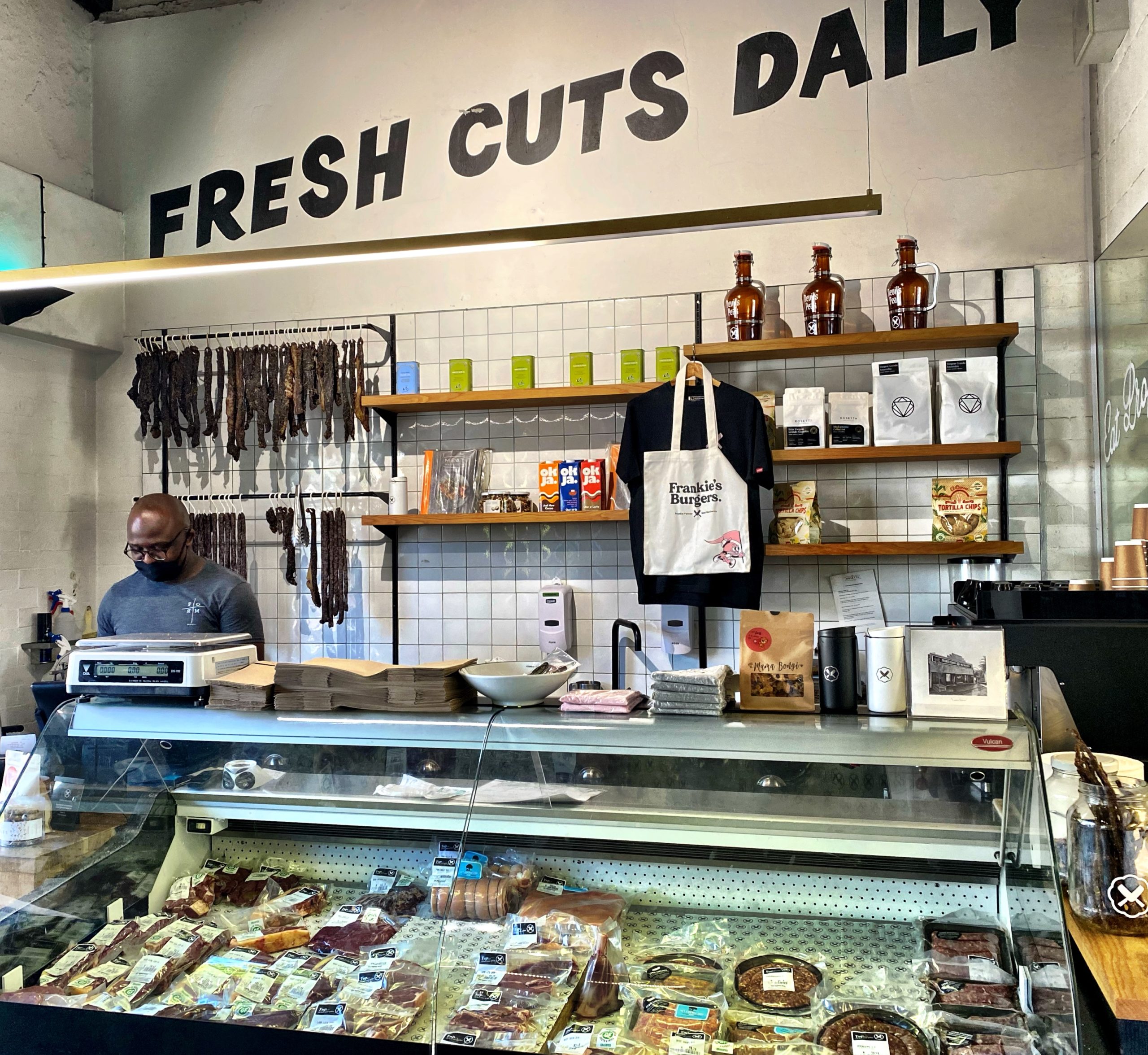
Frankie Fenner Meat Merchants main shop in Woodstock. (Photo: Bianca Coleman)
Fenner, with whom I’ve had many long email conversations over the past year (the weekly burger boxes to help save restaurants at the beginning of lockdown in 2020 being the catalyst), said he is the only butcher he knows who actively encourages people to eat less meat. “I really, truly believe this. People have just become very conditioned to expecting meat. All the time. And that’s bullshit.
“Meat is supposed to be a luxury item. It’s supposed to be celebrated. I want people to go back to that. Buy less of it but pay more for it, with the knowledge that it was raised in humane conditions. The feedlot industry exists as a result of humans having a crazy, insatiable demand for meat. By expecting it on their plates three times a day, seven days a week, they have created (and continue to support) factory farming.”
Salvin Hirschfield, co-owner of Son Of A Butcher (he literally is) in Regent Road, Sea Point, with his sister Merlene, has similar ideas.
“When you start mass producing meat you drive it to being a commodity and with a commodity, the price is low, volume is high and people are encouraged to eat it for the sake of eating it. To do that you have to go against what God created,” he said.
“The animals meant to walk the earth for two years before they’re ready for us to consume, they want to do that in a year. The only way is with additives. I believe our way is healthier – not only for the human consumer but it’s also better for the animal. And for nature and sustainability.”
Hirschfield’s late father always told him: “You must remember, the cow has got a soul and if you want that soul to look after your soul, you must look after that animal the same way you look after your child. You must care for it, treat it well, and you must respect it.”
People are eating less meat as it is, said Hirschfield, and are becoming more discerning. “Instead of having a steak every night – or any protein – they’re having every three nights or even less.”
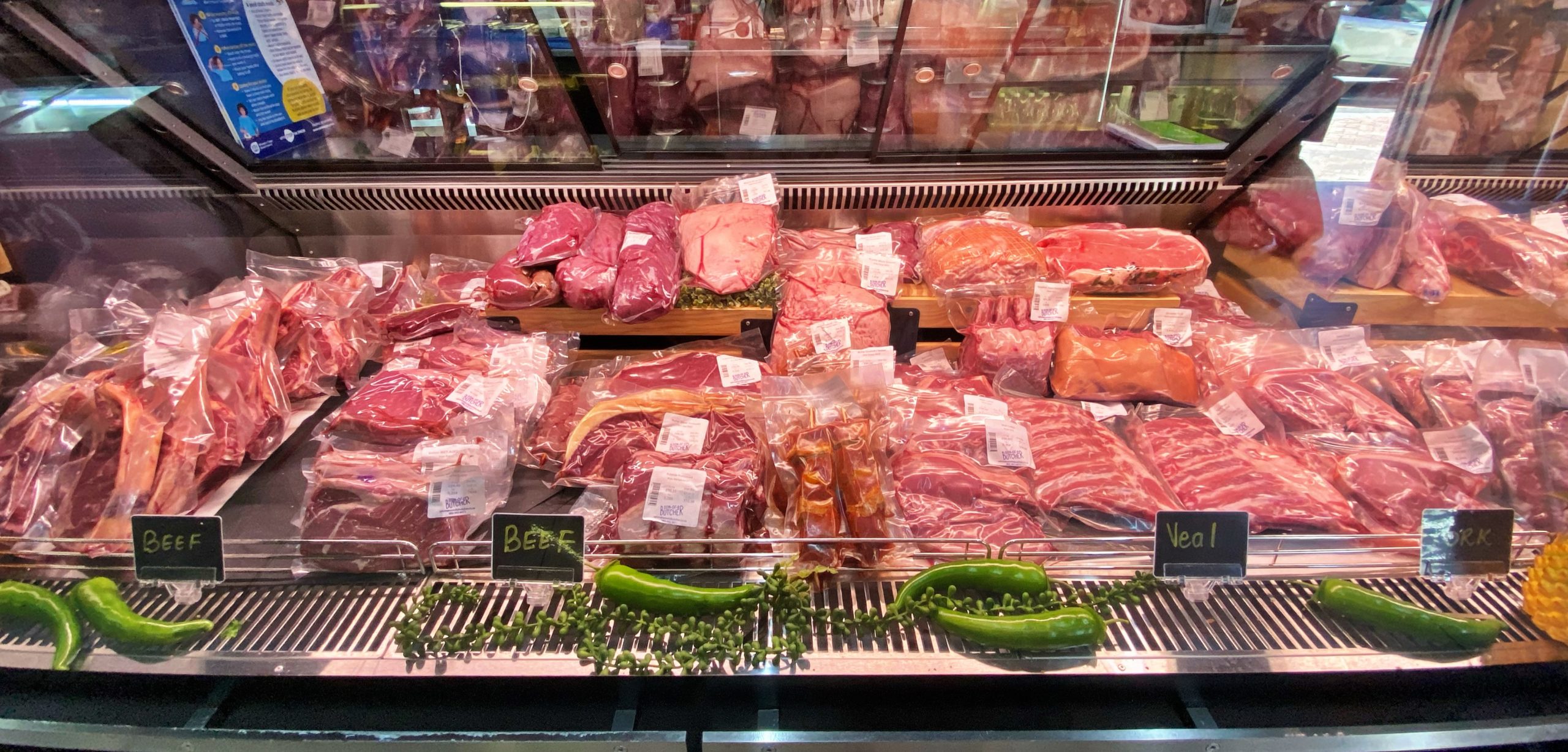
Ethically sourced meats at Son Of A Butcher. (Photo: Bianca Coleman)
As for the price, the cost of mass produced animals has become so high the gap between farming for one year or two has become virtually non-existent, said Hirschfield. “Look on my shelves and you see free range or grass fed aged steak which, compared to steak in a supermarket, does not have a big price difference and that will eventually disappear. The grain they feed the animal is becoming terribly expensive, the routine antibiotics even more so. The growth hormone estrogen – the patches as we call them – is horrifically expensive.”
Heck, ask any women going through menopause and she’ll vouch for that. It’s not a joke.
“You get what you pay for but I don’t believe free range or grass fed meat should be super expensive’ I think it should be value for money,” said Hirschfield. “The farmer is important; I work with the farmers, not a distributor or wholesaler. I want to know the guy who raised the animal.
“Supermarket meat isn’t bad and I see the need for it, but the future doesn’t lie in mass production, the future lies in smaller production, with the farmer who cares about his animals and wants to be there 10 years from now. It’s not a problem that cannot be overcome.”
Let’s look at grain fed, grass fed and free range for a moment. When you see “grain fed” on a menu, chances are the late cow arrived from a feedlot (feel free to Google images; we’ll wait). Grain is not their natural diet, grazing on grass is. Grain fed meat is generally lighter in colour and the fat is white; cattle which had a diet of green grass will have dark red flesh and yellow fat.
When looking for suppliers it becomes as simple as asking two questions, said Fenner:
- What did the animal eat?
- How was it treated?
“The first question is complicated, as it involves me explaining the difference between free range and grass-fed. Basically, I always need to remind people that the two things are not the same. They are mutually exclusive.
“Free range is a grey area at the best of times but you can buy free range meat anywhere, without knowing anything about what the animal ate. In other words, a retailer can sell ‘free range’ but pump an animal full of hormones, artificial feed etc. Grass fed is how we source.
“The animals need to be roaming around valleys and fields but they also need no supplements in their diet. Cows – in particular – are designed to ruminate grass. Anyone feeding them anything else is doing so to fatten them up and to do it as quickly as possible.”
Buying from a butchery opens up a world of possibilities when it comes to different cuts because for the most part, they are buying in whole carcasses and using everything from nose to tail. Take the time to look beyond the obvious and you’ll discover things like spider steak, bavette, hanger, and skirt. They not only deliver new flavours when cooking but they’re often less expensive.
“We believe if an animal has given its life for us to eat, we have the responsibility of using every scrap we can. So, yes, we have a lot of weird cuts that people have most likely never cooked with. The irony here is that secondary cuts are generally cheaper, tastier and more forgiving,” said Fenner.

The successful lamb rump made from Fenner’s book, Meat Manifesto, left undressed so as to admire its beauty. (Photo: Bianca Coleman)
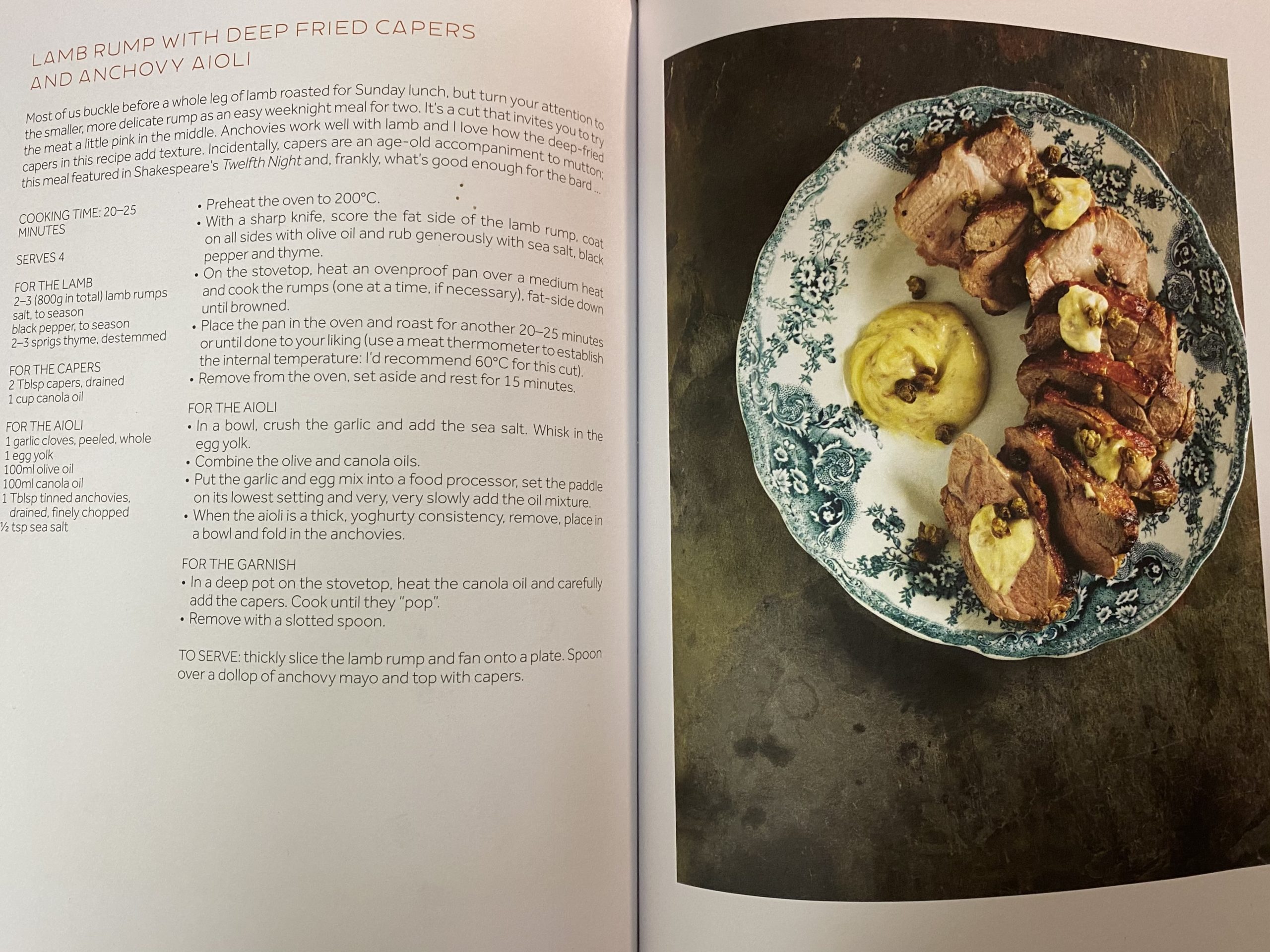
The lamb rump recipe from the book, for comparison. (Photo: Bianca Coleman)
There’s a lot to be said for forgiveness; mucking up a R200 ribeye is nothing short of heartbreaking. Alas, I speak from experience. On other occasions, I’ve had great success with Frankie Fenner meat, thanks to Fenner himself and his endlessly patient emails, and his superb book, Meat Manifesto. The wins have included a lambchetta (like a porchetta but lamb) and lamb rump from the book.
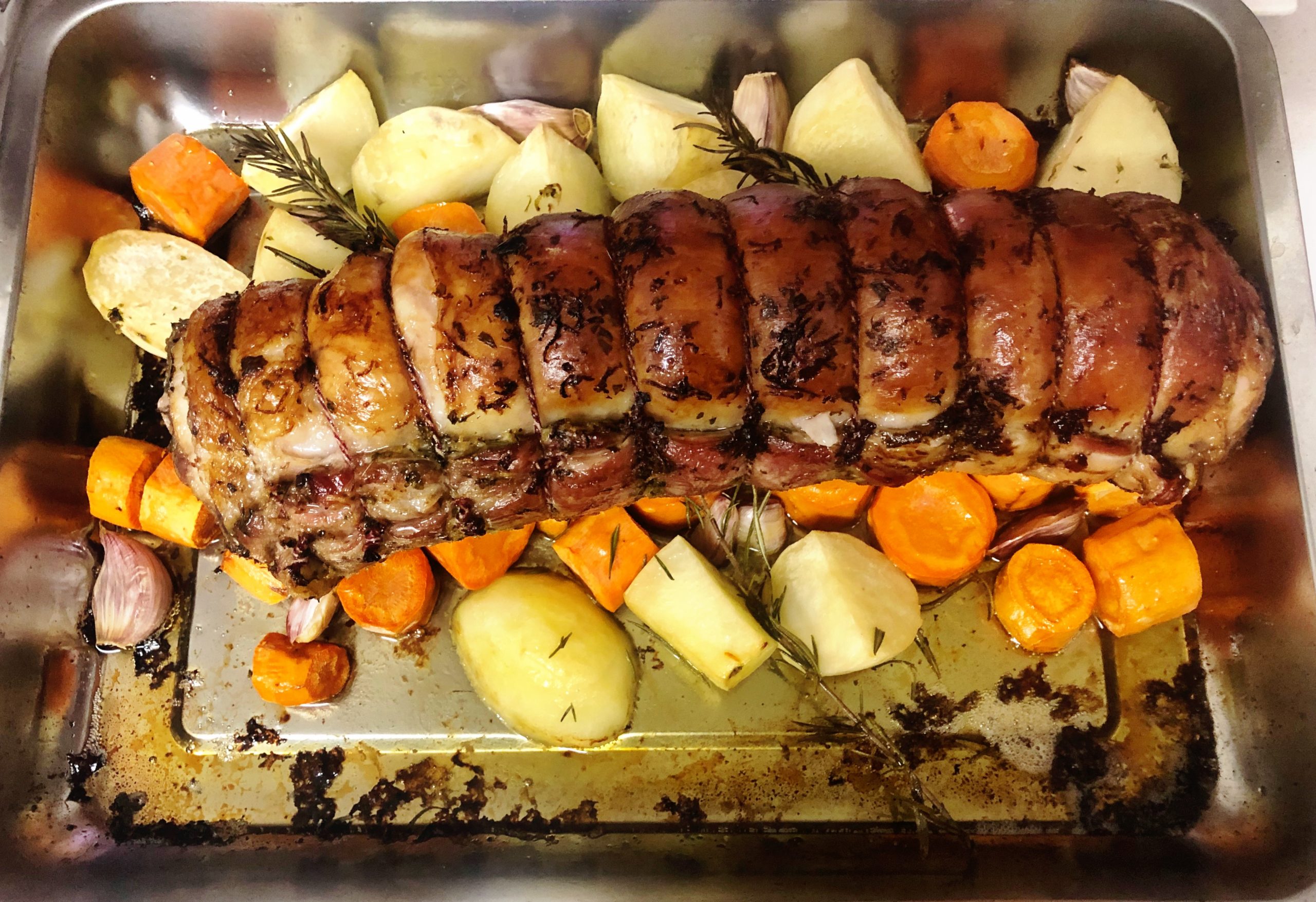
The perfectly cooked lambchetta. (Photo: Bianca Coleman)
At Son Of A Butcher – where Hirschfield has recently added rotisserie chickens which are not heavily salted – the dry aging fridge is an attraction, which began with chefs (the butchery supplies many top restaurants) wanting well hung beef which had been aged for 40 or 60 days. It accounts for about 40% of the business. It’s not only for the professionals; you too, as a normal person, can order your preferred cuts aged to perfection – porterhouse, T-bone, ribeye, ribeye on the bone aka Cowboy Steak, ribeye on an even bigger bone aka the Tomahawk (or Flintstone), or rump (which Hirschfield calls the Cinderella of steaks).
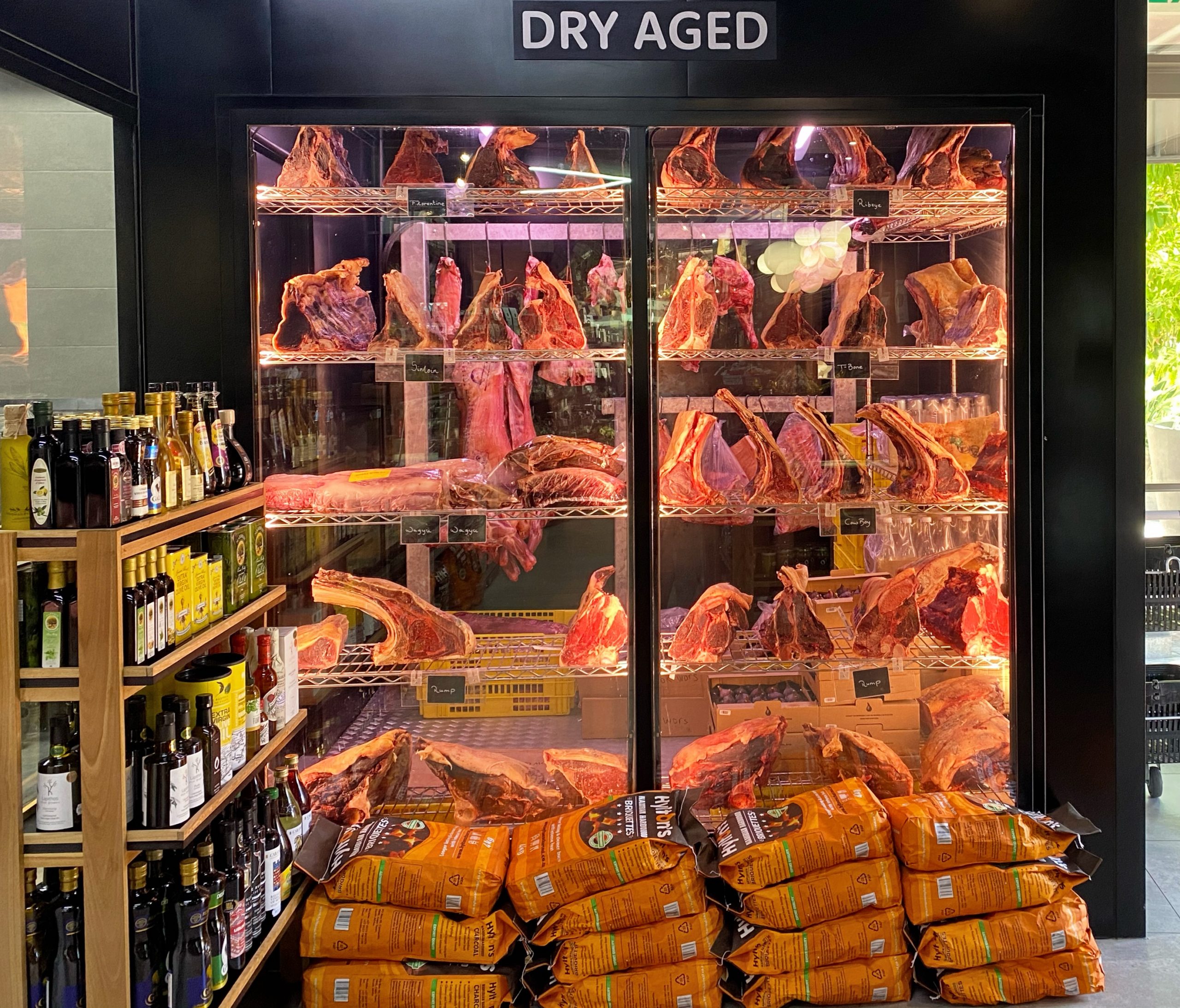
Just like chefs, normal people can order the cuts to be dry aged at Son Of A Butcher. (Photo: Bianca Coleman)
“No one wants it until they taste it. It’s a hard working muscle so it’s normally tough but when it’s aged, the fibres break down and it becomes quite tender. Flavour-wise it overpowers any other cut,” he said.
When it comes to using the entire animal, mince and sausages are important to the butcher, and as consumers we have more options than ever before. And who doesn’t love a good sausage? Fenner recommended the beef bourguignon ones which are made with the ingredients you’ll find in this famous stew: Beef, mushrooms, fresh garlic, onion, thyme, rosemary, lemon zest, celery, parsley and red wine.

Sausages are a butcher’s bread and butter. This lamb boerewors was the best I’ve had (unpopular opinion: I don’t like boerewors). (Photo: Bianca Coleman)
“For the sausages, I could go on and on about them. As a category, sausages are so important to us. And a big passion of mine,” said Fenner. “Sausages really are the most sustainable way a meat eater can support a small butchery. If you are shopping at an independent, but buying all the usual cuts, you are really just leaving them with the problem of how to move the rest of the carcass.
“Well-made and considered sausages should be celebrated the same way a fillet is. I would suggest starting them in the pan with some oil on a gentle heat and adding a splash of wine/water/stock before covering with a lid. You are wanting an internal temp of 52 degrees Celsius here, before allowing them to rest. (Important step to retain juices.) Alternatively, you could bake those sausages in the oven, along with some root veg. Just make sure the veg will be cooked in about 20 minutes. That’s the same time as the sausages. Alternatively, put the veg in first with hard herbs like thyme, rosemary etc. and add the sausages towards the end of cooking.
“A third use for those particular sausages would be to do an ‘inception’ type thing and make a beef bourguignon-inspired dish. So, simply split the casings and remove the filling. Soften some onions in oil, add the sausage meat and brown. Throw in a tin of tomatoes and let it reduce down. Serve on wet polenta.”
Dinner sorted. DM/TGIFood





 Become an Insider
Become an Insider
Comments - Please login in order to comment.